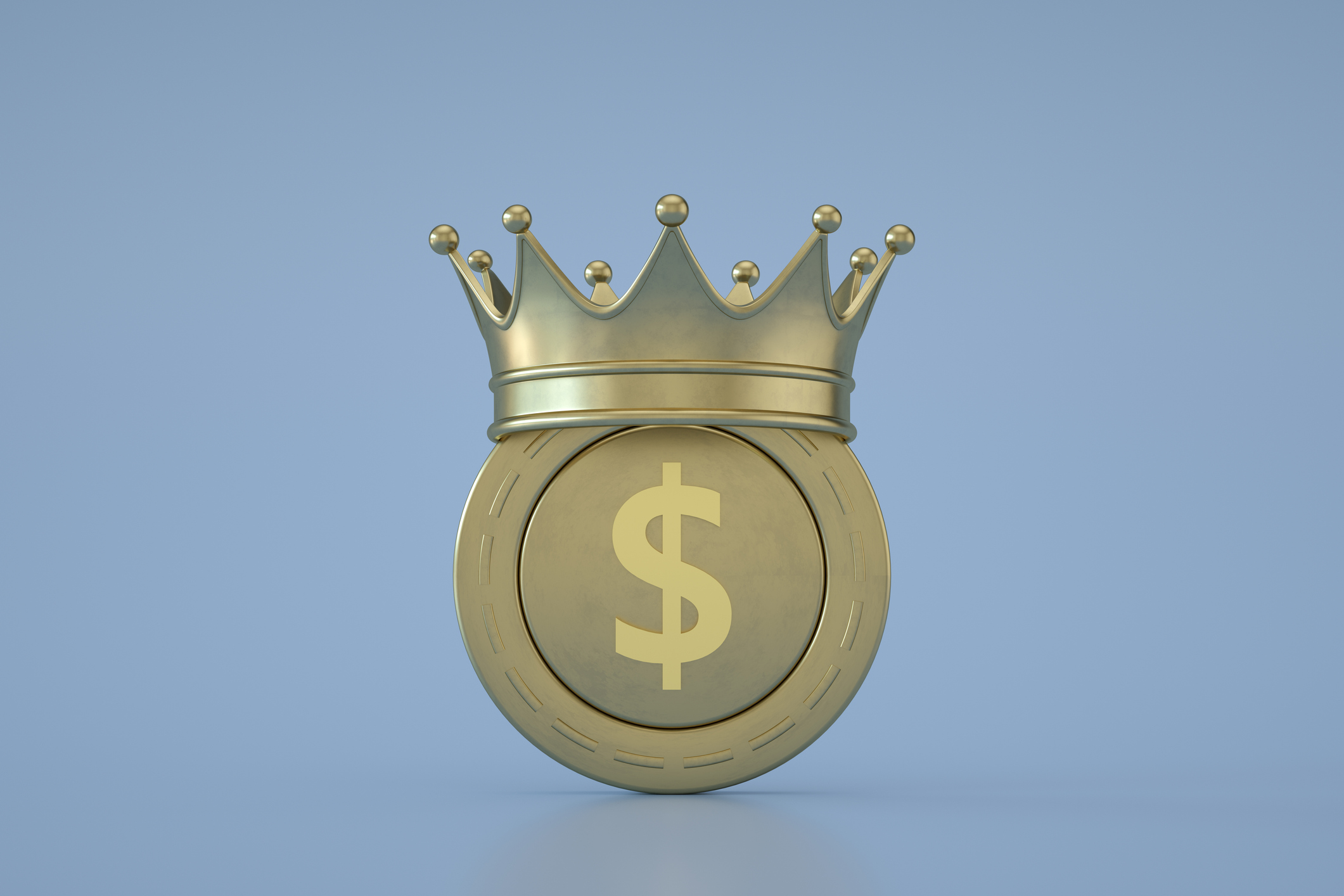NOBL: An ETF For Dividend Aristocrats
The S&P 500 Dividend Aristocrats index consists of companies that have increased dividends for at least 25 consecutive years — and only one U.S. fund tracks it.


A chronicle of companies moving in and out of the S&P 500 Dividend Aristocrats index may not be as riveting as an episode of The White Lotus. But look behind the scenes. Stock market volatility is heightened these days, signaling a possible inflection point in market leadership. It’s a good time, then, for investors to turn their attention to stocks that pay dividends, especially the stocks of high-quality companies with steadily increasing payouts.
That’s the stomping ground of the Dividend Aristocrats index, which includes only companies in the S&P 500 benchmark that have consistently raised dividends for at least 25 consecutive years. Coca-Cola, Procter & Gamble and Walmart are longtime Aristocrats members.
Earlier this year, as part of the benchmark’s annual reconstitution, three new companies were added: insurance company Erie Indemnity, energy provider Eversource Energy, and FactSet Research Systems, which provides financial data and analytic services to investors. There were no deletions.

Sign up for Kiplinger’s Free E-Newsletters
Profit and prosper with the best of expert advice on investing, taxes, retirement, personal finance and more - straight to your e-mail.
Profit and prosper with the best of expert advice - straight to your e-mail.
ProShares S&P 500 Dividend Aristocrats (NOBL)
Exchange-traded fund ProShares S&P 500 Dividend Aristocrats (NOBL, $104, expense ratio 0.35%) is the only U.S. fund that tracks the Dividend Aristocrats index, which currently includes 69 stocks.
The ETF is an antidote of sorts to the concentration of the Magnificent Seven, those tech-related firms that drove market returns for much of the past two years. None of the Seven are Aristocrats, for starters; two of them, Amazon.com and Tesla, don’t even pay a dividend. And the Aristocrats index is equal-weighted — assets are evenly divided by each stock in the index, regardless of market value, dividend yield, or any other measure — and rebalanced quarterly. “It’s a ward against single-stock concentration,” says a spokesperson for S&P Dow Jones Indices. The ETF also yields 2.5%, which is better than the 1.2% yield of a comparable S&P 500 ETF.
Naturally, the absence of the Magnificent Seven in the Aristocrats index has hurt the relative recent returns of the ProShares S&P 500 Dividend Aristocrats ETF. Over the past five years, the ETF’s 11.5% annualized return has lagged the 16.9% average annual gain in the straight-up S&P 500. But over longer hauls, the Aristocrats index has turned in similar returns to the S&P 500, with less volatility.
Note: This item first appeared in Kiplinger Personal Finance Magazine, a monthly, trustworthy source of advice and guidance. Subscribe to help you make more money and keep more of the money you make here.
Related content
Profit and prosper with the best of Kiplinger's advice on investing, taxes, retirement, personal finance and much more. Delivered daily. Enter your email in the box and click Sign Me Up.

Nellie joined Kiplinger in August 2011 after a seven-year stint in Hong Kong. There, she worked for the Wall Street Journal Asia, where as lifestyle editor, she launched and edited Scene Asia, an online guide to food, wine, entertainment and the arts in Asia. Prior to that, she was an editor at Weekend Journal, the Friday lifestyle section of the Wall Street Journal Asia. Kiplinger isn't Nellie's first foray into personal finance: She has also worked at SmartMoney (rising from fact-checker to senior writer), and she was a senior editor at Money.
-
 No Social Security Tax Cut in Trump’s ‘Big Bill’: What Retirees Need to Know
No Social Security Tax Cut in Trump’s ‘Big Bill’: What Retirees Need to KnowTax Policy Eliminating taxes on Social Security benefits is missing from President Trump’s proposed tax overhaul. Here’s why and what an alternative offering could mean for retirement taxes.
-
 What to Do and What Not to Do When Markets Get Turbulent
What to Do and What Not to Do When Markets Get TurbulentFollow these tips and strategies to help you navigate investing turbulence.
-
 What to Do and What Not to Do When Markets Get Turbulent
What to Do and What Not to Do When Markets Get TurbulentFollow these tips and strategies to help you navigate investing turbulence.
-
 What to Know About Treasury Inflation-Protected Securities (TIPS)
What to Know About Treasury Inflation-Protected Securities (TIPS)Understanding what Treasury Inflation-Protected Securities (TIPS) are and how to use them in a portfolio.
-
 How Private Capital Could Be the Key to Rebuilding America
How Private Capital Could Be the Key to Rebuilding AmericaPrivate capital investment in infrastructure could be a more efficient and effective alternative to government funding, potentially stimulating the economy during uncertain times, creating jobs and delivering projects on time and within budget.
-
 Real Estate Bridge Funds: An Expert Guide to Investing in a Volatile Market
Real Estate Bridge Funds: An Expert Guide to Investing in a Volatile MarketInvestors looking for passive income are buying into these funds, which offer capital to borrowers for short-term financing.
-
 Stock Market Today: Stocks Soar on Israel-Iran Ceasefire
Stock Market Today: Stocks Soar on Israel-Iran CeasefireIt was a rocky start to the truce, but a temporary halt to fighting between Israel and Iran appears to be holding for now.
-
 The Riskiest S&P 500 Stocks Right Now
The Riskiest S&P 500 Stocks Right NowBuyer beware: These are five of the riskiest stocks in the S&P 500 at the moment, based on one measure of volatility.
-
 Bill Bought a Fridge, and Then His Nightmare Began
Bill Bought a Fridge, and Then His Nightmare BeganA Lowe's customer reached out to me after he encountered the retailer's 48-hour return window for major appliances when his brand-new fridge turned out to be defective.
-
 Savvy Marketing Tips for Financial Pros From a Financial Pro
Savvy Marketing Tips for Financial Pros From a Financial ProThese strategies for marketing, client acquisition and retention can help financial professionals elevate their business and production.